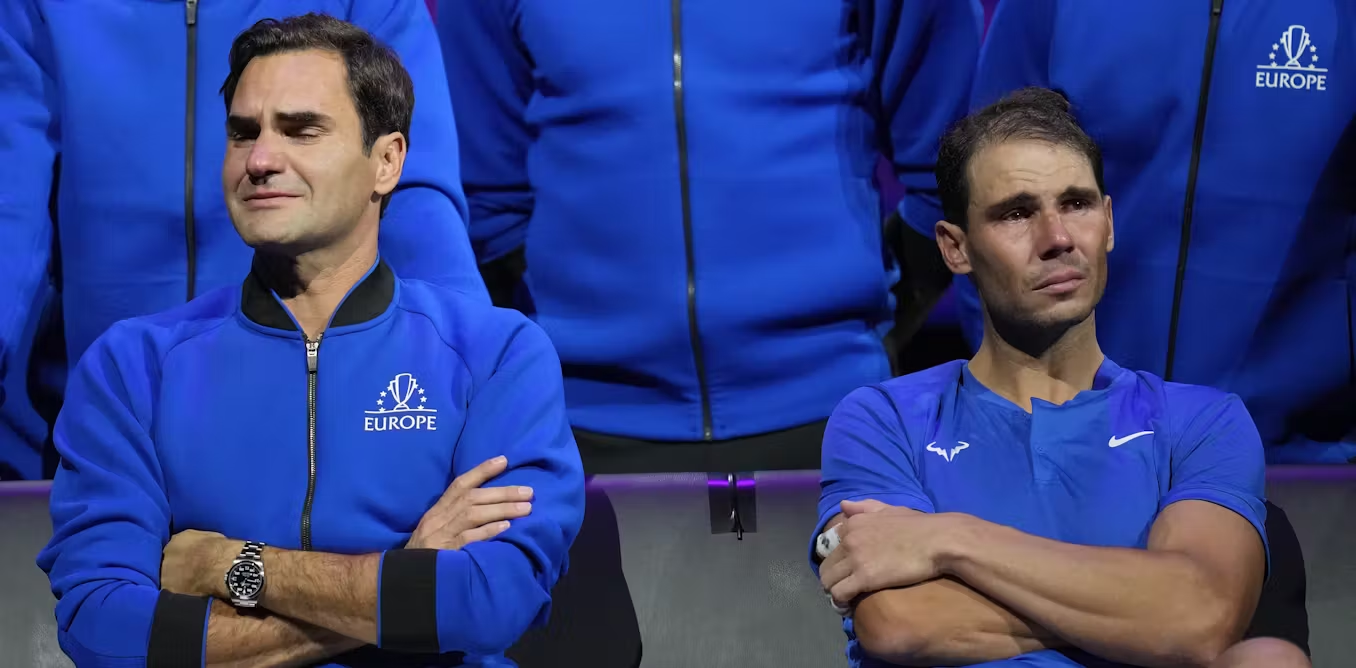Think back to when you met someone for the first time. One of the first questions you asked, or were asked, was likely: “what do you do for work?”
It’s a polite, innocuous and socially ingrained way of getting to know more about a person. But it also demonstrates the central role of our professional lives as part of our personal identities.
For professional athletes, their careers, exploits and recognition can become the defining aspect of their identity.
So what happens when sporting careers end?
The transition to retirement, across professions and countries, can be extremely tough to navigate.
It can be especially difficult for elite sportspeople, who can experience retirement as a loss of identityconnected to their sense of achievement, meaning and control in life.
How retirement impacts athletes
A common saying with many sportspeople is “athletes die twice” – once when they retire and again at their death.
Former Wallaby Brendan Cannon has spoken of this difficulty:
[People] want to talk to you about what you used to be, and all you want to focus on is what you want to become.
During the transition to retirement, elite athletes can be affected by how they got into their chosen sport, how long they stayed in the system and the variables that either accelerated or ended their careers.
Other factors include whether they played a team or individual sport, male vs female pathways, whether their exit from sport was voluntary or involuntary and their age when retiring.
My (Sarah) interviews with former professional athletes demonstrate the complexity of retiring from elite sport.
To the public, William Zillman, former NRL star turned vet, seems to have it all together. But it didn’t come without hardship, pain and struggles in navigating the harsh terrain of retirement.
When asked about his retirement, Zillman said: “[Being an NRL player was] all I knew.”
I turned up to work each day, I was told what to do, how to do it and when to do it […] but when I left the system, I think I lost the ability to think for myself. I went from having all the help in the world to very little – it was tough.
Retiring from high-performance sport can have profound effects on an athlete’s physical and mental healthas well as their social and professional development.
While “regular people” usually retire in their 60s or 70s, an athlete’s retirement often occurs earlier, coinciding with crucial phases of career development and family planning.
Some have to adjust from being highly paid and highly managed to surviving on minimum wages with very little support.
“It’s a recipe for disaster,” Ryan James, who considers himself one of the lucky ones, said.
A former forward for the Gold Coast Titans, James has been working closely with the Rugby League Players Association (RLPA) with the aim to address some of the complex issues with the transition experience.
James knows only too well the struggles some people in the system face as their careers begin to wind down:
Many of our players come into the system from disadvantaged and vulnerable backgrounds and while we have made a start, there is more we can be doing. Financial literacy and management is just one avenue we need to tackle. I’ve known too many retired, vulnerable players who were homeless, sleeping in cars with their young families. It’s devastating.
It took former English captain turned NRL superstar James Graham a good part of 18 months to re-configure his identity:
You come out feeling so lost and alone. Most of your life is spent training, connecting with mates, having a lot of routine and structure to almost nothing. It’s strange and confronting.
What are the major codes doing?
Across various sporting codes there are programs that aim to assist athletes to prepare for retirement.
For example, the RLPA has a program to support athletes who are transitioning.
Other major professional Australian codes have similar programs, including the AFL, Professional Footballers Association (soccer) and cricket.
However, whether or not athletes choose to participate in these programs is usually at the discretion of the players.
The importance of planning, preparation and support
One of the key factors influencing how an athlete transitions into life after sport is how much they have prepared for it.
Research with elite athletes from the AFL, NRL and A-League shows those who planned and prepared for life after sport and who had goals, direction and identities beyond sport, experienced more acceptance, autonomy (control) and optimism about the future.
On the other hand, those who were unprepared or did not plan ahead experienced negative emotional and psychological states, and struggled to move on. This negative effect is even more pronounced for those who were forced to end their career due to injury.
How to improve the situation
A recent scoping review explored the notion of retirement for professional athletes and their ability to adapt to life after sport.
It summarised many areas that need more attention:
Make athletes aware of what’s ahead
Expect that when you leave, it may be hard. Reach out to your club, coach and support services and surround yourself with people who you can talk to and who may be able to help.
Athletes should expect that it will take time to adjust, and this adjustment period is crucial for mitigating the adverse effects of retirement. This adjustment period can also significantly reduce the initial negative impacts on their mental and physical health.
Tailored support programs
Developing tailored support programs that address the specific needs of different sports and athlete sub-groups can help mitigate the challenges associated with retirement.
These programs might include career counselling, mental health support and opportunities for continuous involvement in the sports community.
A need for further research
There is a pressing need for more research to identify effective support mechanisms for retiring athletes. Understanding the types of support that facilitate a smoother transition can help in designing programs and interventions tailored to the unique needs of elite athletes.
Additionally, mapping out the factors that aid or hinder the transition across different sports and athlete sub-groups would provide valuable insights.





